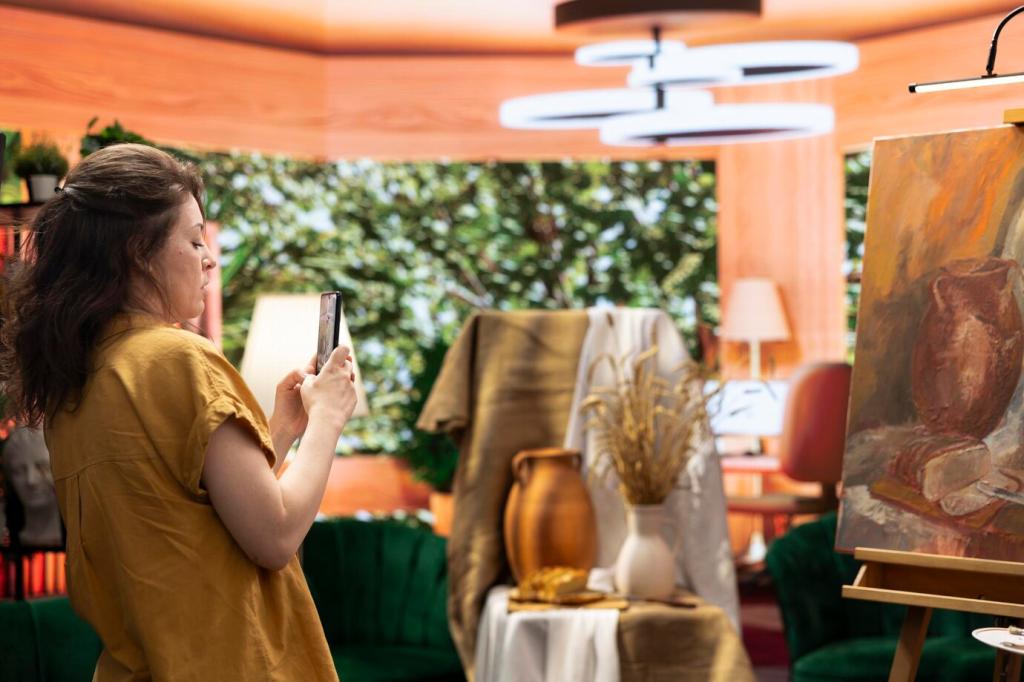Chosen theme: Developing a Captivating Narrative for Your Interior Design Website. Welcome to a space where words, images, and emotion collaborate to make visitors feel at home—before they ever cross the threshold. Let’s craft a story that invites, guides, and gently persuades, turning quiet admiration into confident action.

The Origin Moment
Recall the moment your design philosophy crystallized—perhaps a childhood room rearranged into peace, or a studio sunrise over samples and sketches. Share that spark to humanize your brand and invite readers into your creative world.

Your Transformational Promise
Define the before and after you reliably produce, in emotional and practical terms. Not just rooms improved, but lives clarified—mornings that flow, dinners that linger, spaces that soothe. Invite readers to imagine their own transformation clearly.

Audience Archetypes
Sketch vivid profiles of the clients you help best—busy professionals seeking calm, growing families needing flexible zones, art lovers craving gallery-light precision. Speak to their desires and dilemmas so your copy lands with empathetic accuracy.

Crafting a Voice Palette
Select three adjectives that guide tone—perhaps warm, assured, and minimalist. Let them shape word choice, sentence rhythm, and metaphor. Read aloud; if the cadence matches your style, you’re building authentic voice, not marketing gloss.

Consistency Across Pages
Ensure your About, Portfolio, and Contact pages all speak with the same confidence and clarity. Use recurring phrases and thematic motifs so visitors feel continuity—like returning to a signature material that quietly ties a home together.

Open with a succinct promise, follow with a single memorable project, then reveal your approach in three clear steps. Close with a low-friction invitation to explore deeper or subscribe for design notes that extend the story.

For every project, present context, constraints, insights, and outcomes. Use captions to highlight decisions—why that lighting plan, how circulation changed morning routines. Let readers feel your thinking, not just admire finished photographs.

Treat your About page as a personal, generous essay. Share beliefs and boundaries, mentors and influences, small rituals that guide your studio. Invite readers to respond with their values, nurturing alignment before any proposal is drafted.
Visual Storytelling that Supports the Words
Photo Sequencing as Plot
Lead with a wide establishing shot, then detail the textures that matter. Progress through functional moments—entry, flow, task lighting—before revealing atmospheric vignettes. Each image should answer a narrative question raised by the last.
Before-and-After as Transformation
When appropriate, show constraints honestly. Then demonstrate the decision path that changed everything—sightlines opened, storage concealed, acoustics calmed. Use concise captions to highlight inflection points that clearly justify your design choices.
Typography and White Space
Choose type that echoes your aesthetic—quiet modern, timeless serif, or refined geometric. Generous margins and short paragraphs keep attention relaxed. Let captions breathe so readers savor details without feeling overwhelmed or hurried.

This is the heading
Lorem ipsum dolor sit amet, consectetur adipiscing elit. Ut elit tellus, luctus nec ullamcorper mattis, pulvinar dapibus leo.

This is the heading
Lorem ipsum dolor sit amet, consectetur adipiscing elit. Ut elit tellus, luctus nec ullamcorper mattis, pulvinar dapibus leo.
Keyword Themes with Integrity
Group keywords by intent: small apartment storage solutions, warm minimalist living room, acoustic design for home office. Write generous, useful content that naturally answers these queries without diluting your studio’s distinctive point of view.
Structured Data as Context
Implement schema for projects, articles, and FAQs so search engines understand relationships between your stories. This helps surface rich results, while keeping visitors oriented when they land deep within your site’s narrative.
Internal Links as Narrative Threads
Weave links that feel editorial: From a project, lead to an article explaining that lighting strategy; from your process page, link to a case that demonstrates it. Threads create satisfying, non-linear journeys that build trust.
Anecdotes That Reveal Character
Share moments that show how you think: a contractor walk-through where a small framing adjustment rescued natural light, or a material swap that improved durability. Readers infer professionalism from these vivid, grounded details.
Transparent Process Snapshots
Offer behind-the-scenes posts—iteration sketches, mockups, sample boards. Explain why one option won and another didn’t. This transparency helps visitors feel included, encouraging them to comment, ask questions, or request a discovery call.
